I got a lot of requests to write more on the 8-fold path of yoga – that some refer to as Ashtanga Yoga or Raja Yoga. I know that it gets a bit confusing at times – after all , there are so many terminologies and variations – ashtanga, raja, bhakti, karma, kriya, gyana – which one does one follow?
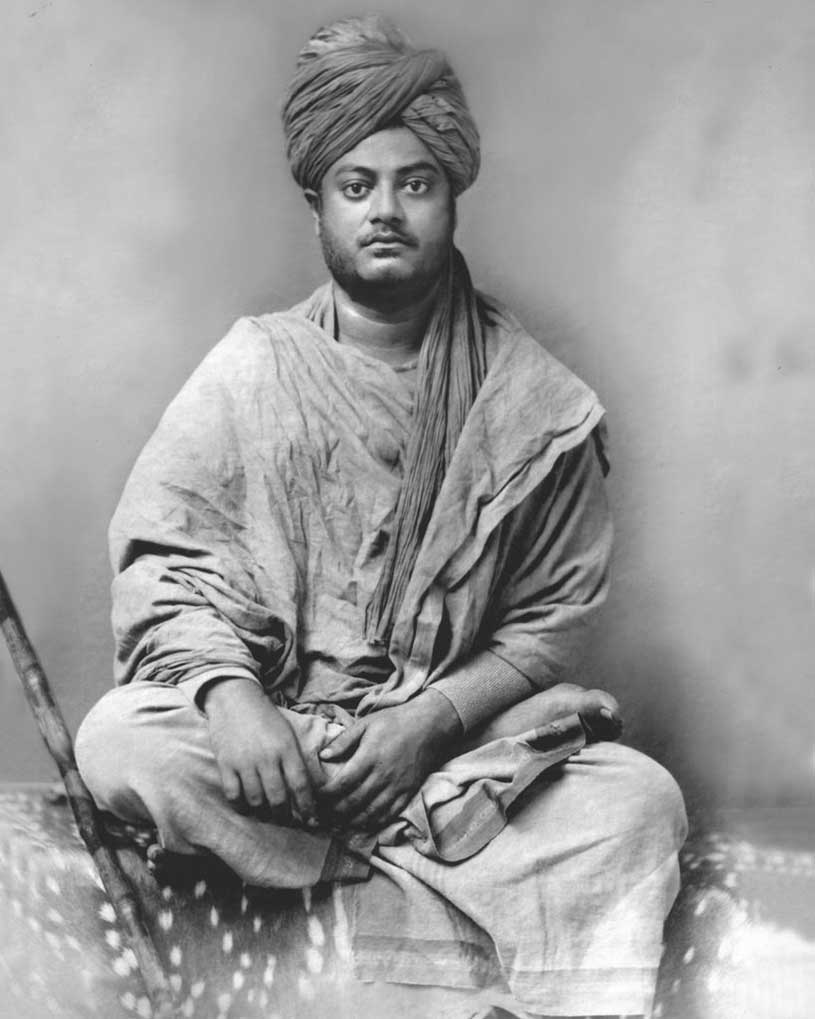
Raja Yoga, or अष्टाङ्ग (Ashtanga Yoga), is an 8-fold path followed as a discipline in Yoga. Ashta is eight, and anga means limbs.
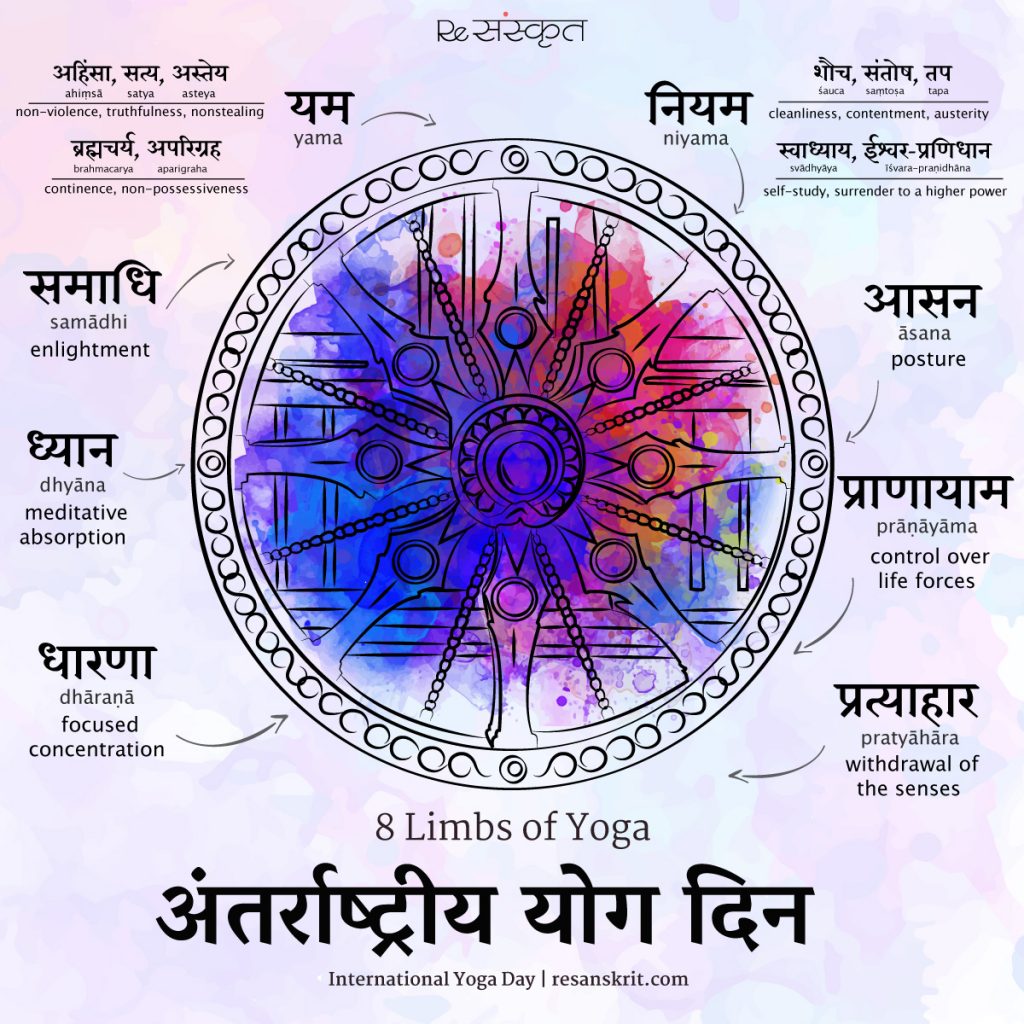
यम नियमाअसन प्राणायाम प्रत्याहार धारणा ध्यान समाधयोऽष्टावङ्गानि:
yama-niyama-āsana-prāṇāyāma-pratyāhāra-dhāraṇā-dhyāna-samādhayaḥ aṣṭau-aṅgāni
Patanjali Yoga Sutra 2.29
The eight limbs of yoga are: yama, niyama, āsana, prānāyāma, pratyāharā, dhāranā, dhyāna, and samādhi.
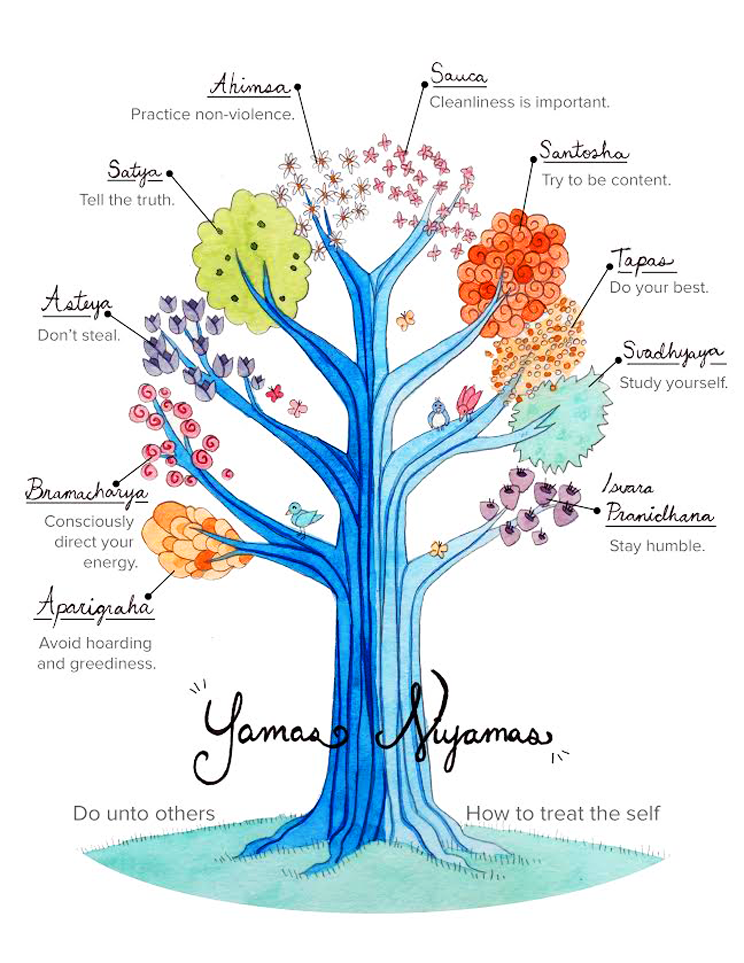
Yama and niyama are codes of ethical behaviour and restraint. Yama is ethical behaviour, and niyama is the self-discipline that follows our ethical behaviour. For example, to practice ahimsā, or non-violence (yama), one has to practice santoshā, or contentment. The desire to harm usually comes from discontent, doesn’t it? Without going into too much detail at present, let me just say that as good conduct and restraint are the foundations of any moral society, the practice of yamas and niyamas gives a foundation to the journey of yoga.
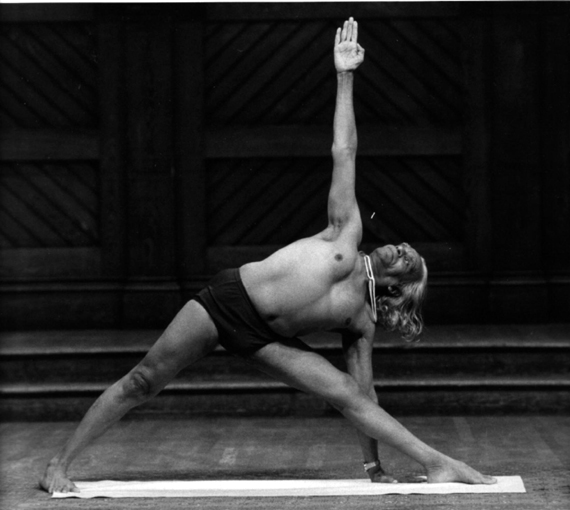
Āsanā is the third limb of yoga, one that is the ‘most popular’ and has off late become the face of yoga practice. While āsanās are important, over-reliance on postures without understanding (or working towards) the larger goal merely reduces this powerful practice to a sequence of twists and stretches.
The fourth limb is prānāyāma – and I spoke about this in detail in an earlier article.
Then comes pratyāharā, or withdrawal of your senses. We interact with the outside world through our five senses, and the process of pratyāharā helps in objectively looking inwards, instead of outwards. We are able to observe our dependence on the sense organs, and begin to realise that our attachment to these senses is what is stopping us from looking within…
Once you are able to look inwards, the practice of dhāranā helps to direct this attention to a single point – resulting in intense concentration, and aids in dhyānā, or meditation. Samādhi, the eighth limb, is a result of the intense practice of the other seven limbs of yoga.
In my post a couple of days ago, I had spoken about what yoga is – a way of living, a sustained and disciplined process towards a goal – that goal being realisation.
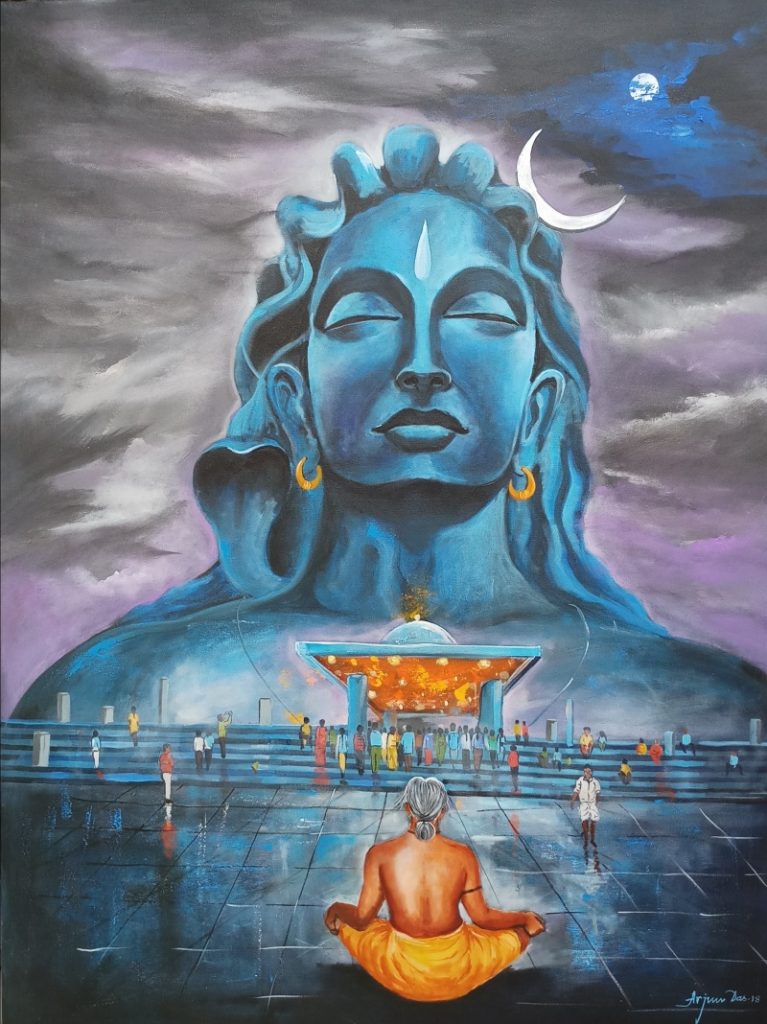
The 8-fold path of Raja Yoga puts this beautifully. Yamā and niyamā (conduct and restraints) guide your interactions with the outside world. Āsanā and prānāyāma help you rediscover your own body and your breath. Pratyāharā and dhāranā help you withdraw your five senses of sight, smell, hearing, taste and touch, so that you are able to move from looking outwards (māyā) to within. Dhyānā, or meditation, helps you look deeper inside you, seeking the indestructible Self. And the consequence is samādhi, or a state of bliss and realisation.
One more thing. This is an eight-fold path, eight limbs, not eight steps. This understanding, that these eight aspects of yoga are not steps but limbs that grow simultaneously, will help you to bring flow into practice, and not try to achieve some sort of completion of levels, something that we have got used to in today’s competitive world.
समत्वं योग उच्यते
Samatvam yoga uchyate – says the Bhagavad Gita – a balanced state where you are in harmony with yourself, with nature, with everyone else.
योगश्चित्तवृत्तिनिरोधः
yogaś-citta-vr̥tti-nirodhaḥ
Yoga is…stillness of the mind.

Pingback: 21-day Sādhanā challenge – Day 18 – Shihan Rohit Ghai